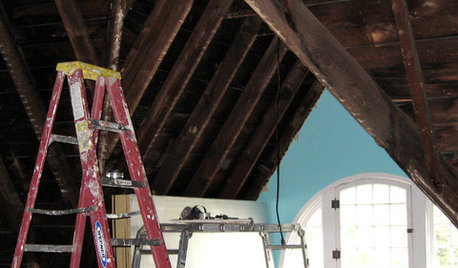I have worms
chickencoupe
11 years ago
Related Stories

GARDENING GUIDESHouzz TV: Make a Worm Bin for Rich Soil and Happy Plants
A worm-powered compost bin that can fit under a sink turns food scraps into a powerful amendment for your garden. Here’s how to make one
Full Story
WINTER GARDENING6 Reasons I’m Not Looking Forward to Spring
Not kicking up your heels anticipating rushes of spring color and garden catalogs? You’re not alone
Full Story
INSIDE HOUZZUsing Houzz: Create a Home To-Do List
See how to use an ideabook to keep track of your home projects this year
Full Story
GARDENING FOR BIRDSWhat to Know About Birds Nesting in Your Yard
Learn how to observe, record data and help ornithologists with NestWatch’s citizen science project understand bird trends
Full Story
KITCHEN DESIGNCockadoodledoo! Roosters in the Kitchen
Add Country Charm and Good Luck With a Chicken in the Cucina
Full Story
REMODELING GUIDES8 Lessons on Renovating a House from Someone Who's Living It
So you think DIY remodeling is going to be fun? Here is one homeowner's list of what you may be getting yourself into
Full Story
HOUZZ TOURSHouzz Tour: For the Love of a Cat in Philadelphia
Pet-friendly features integrated into a mod, eclectic and colorful home mean everyone in the family is happy
Full StorySponsored
Most Skilled Home Improvement Specialists in Franklin County
More Discussions










chickencoupeOriginal Author
slowpoke_gardener
Related Professionals
Seabrook Landscape Architects & Landscape Designers · Bainbridge Island Landscape Contractors · Cordele Landscape Contractors · Fuquay-Varina Landscape Contractors · Harvey Landscape Contractors · Hilton Head Island Landscape Contractors · Hollywood Landscape Contractors · Long Branch Landscape Contractors · Olympia Landscape Contractors · Richmond Landscape Contractors · Baker Decks, Patios & Outdoor Enclosures · Grandview Decks, Patios & Outdoor Enclosures · Hobart Decks, Patios & Outdoor Enclosures · Jupiter Decks, Patios & Outdoor Enclosures · Northbrook Decks, Patios & Outdoor Enclosuresokievegan
Macmex
chickencoupeOriginal Author
chickencoupeOriginal Author
chickencoupeOriginal Author
Lisa_H OK
OklaMoni
slowpoke_gardener
soonergrandmom
chickencoupeOriginal Author
slowpoke_gardener
soonergrandmom
chickencoupeOriginal Author
Macmex
TraceyOKC